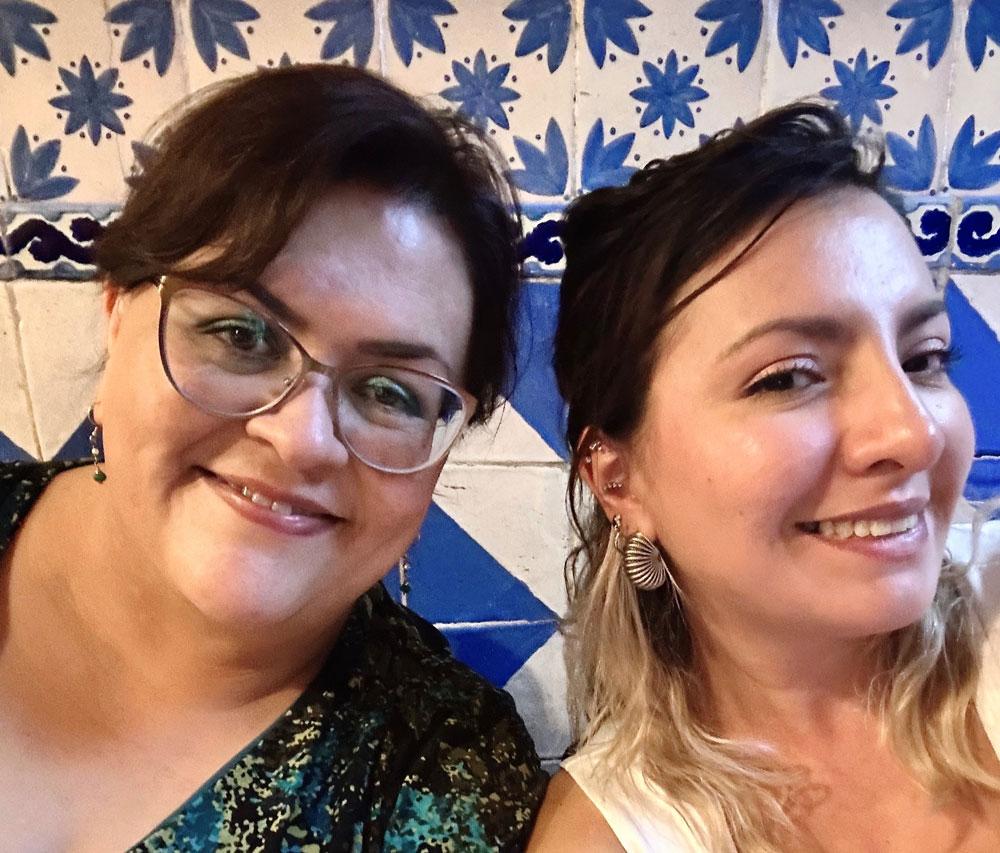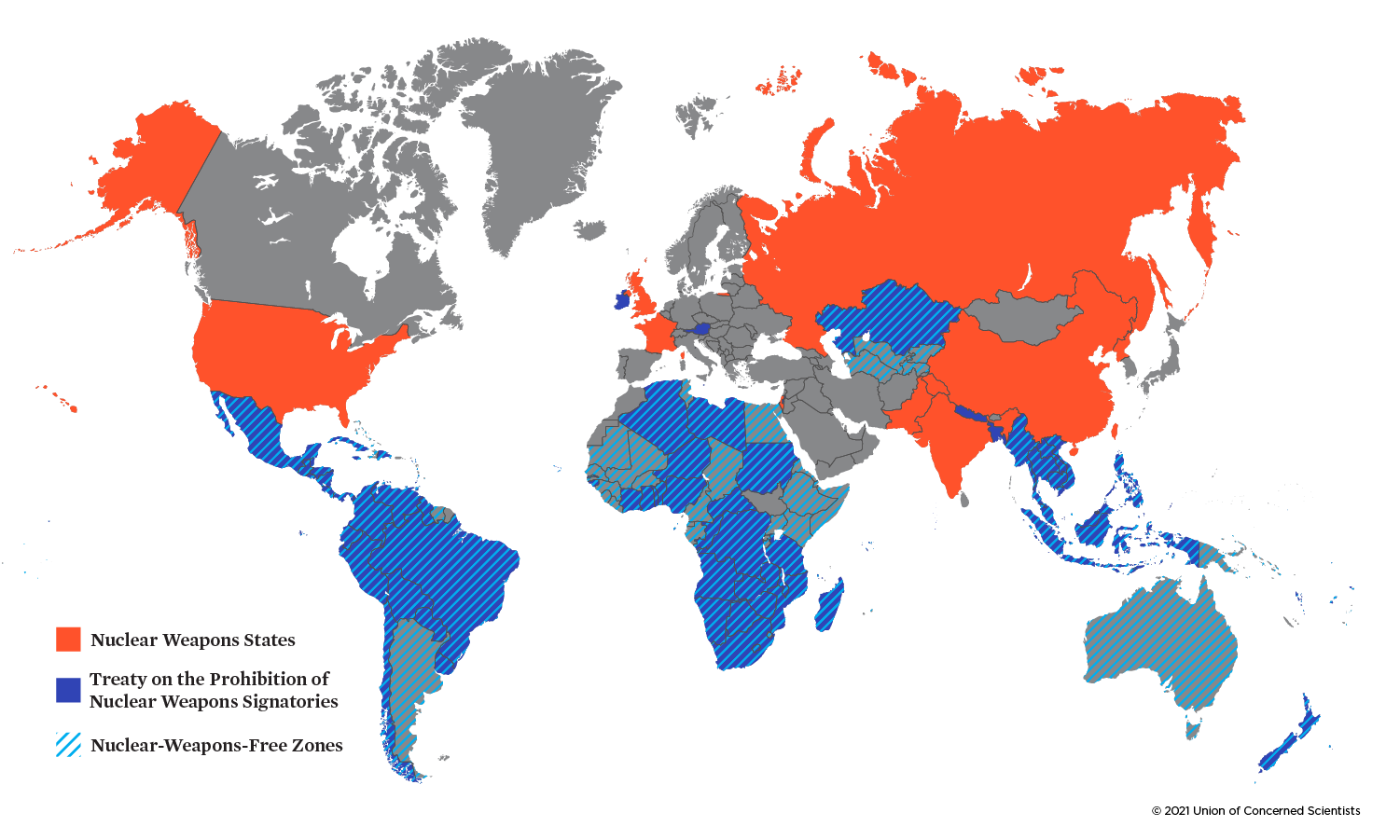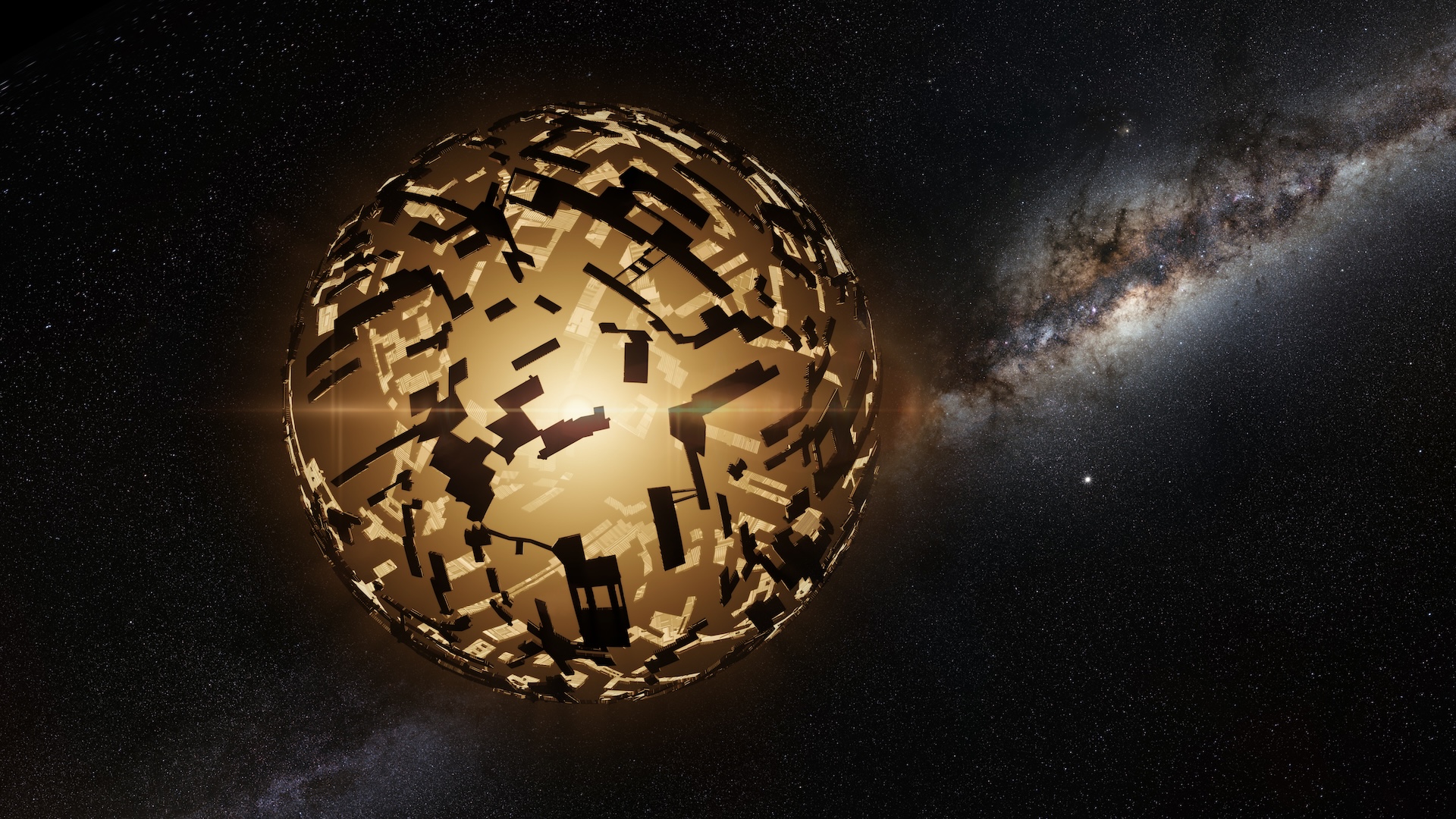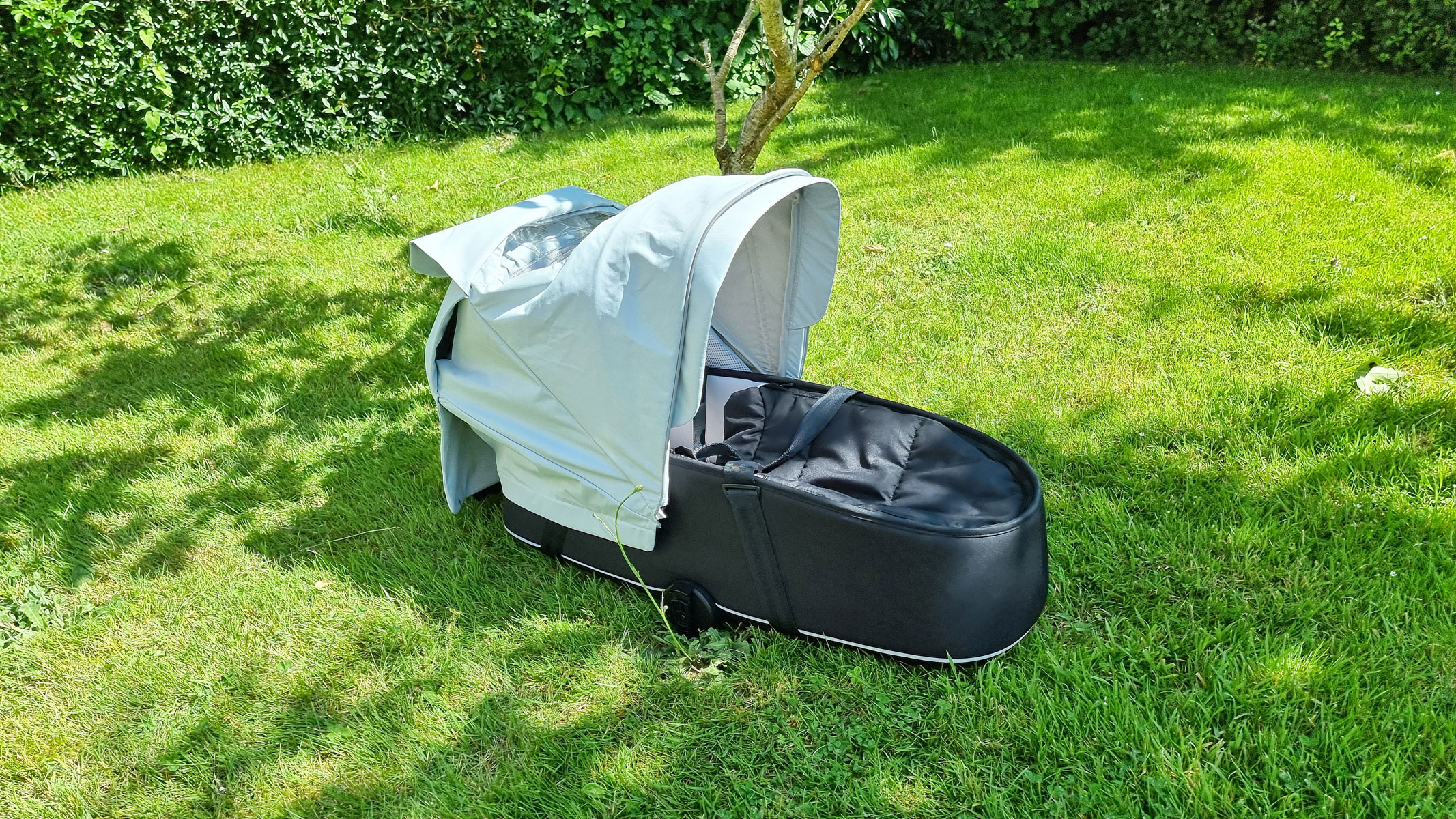An interview with María Antonieta Jáquez Huacuja from the Secretariat for Foreign Affairs of Mexico and Martha Mariana Mendoza Basulto from the Agency for the Prohibition of Nuclear Weapons in Latin America and the Caribbean (OPANAL).
The United States maintains a nuclear weapons arsenal under the assumption this upholds national security.
However, the United States, like many other countries with nuclear weapons, routinely chooses to prioritize nukes over human health and community wellbeing even within the country’s borders.
When looking at regions leading the fight for a safe, nuclear weapon free world the Global South (and not the West) is leading far ahead.
The Treaty of Tlatelolco
The Treaty for the Prohibition of Nuclear Weapons in Latin America and the Caribbean, or its namesake ‘The Treaty of Tlatelolco’, was open for signature on February 14, 1967, in Tlatelolco, Mexico City and went into effect on April 25th, 1969.
Today, the Treaty of Tlatelolco has all 33 nuclear weapon free nations in Latin America and the Caribbean committed to a world without the threat of nuclear weapons.
This treaty in many ways has become the golden standard for other Nuclear Weapon Free Zones (NWFZs) in the world such as the South Pacific, Africa, Southeast Asia, and Central Asia.
We are currently living in a time where there are clear, proven paths to creating NWFZs across nations, and yet the Western world continues to opt for nuclear weapons.
 Tonie Jáquez and Martha Mariana Mendoza Basulto
Tonie Jáquez and Martha Mariana Mendoza Basulto Today, I got the chance to sit down with María Antonieta Jáquez Huacuja from the Secretariat for Foreign Affairs of Mexico and Martha Mariana Mendoza Basulto from the Agency for the Prohibition of Nuclear Weapons in Latin America and the Caribbean (OPANAL) to learn more about how The Treaty of Tlatelolco came to be, what sets this treaty apart, and what lessons the Global North desperately needs to learn.
 Representation of Nuclear Weapon States (NWS) and Nuclear Weapon Free Zones (NWFZs) across the world. A handful of nations in the global north dominate decisions around nuclear weapons. Nuclear weapons are the most inhumane and devastating tools of war ever created. They’re also tools of white supremacy.
Representation of Nuclear Weapon States (NWS) and Nuclear Weapon Free Zones (NWFZs) across the world. A handful of nations in the global north dominate decisions around nuclear weapons. Nuclear weapons are the most inhumane and devastating tools of war ever created. They’re also tools of white supremacy.CF: How did The Treaty of Tlatelolco come about and why?
María Antonieta Jáquez Huacuja (TJ:) Alfonso Garcia Robles was the ambassador of Mexico to Brazil and persuaded the Government of Mexico to pursue a legally binding instrument to stop the possibility of nuclear weapons being developed or deployed in Latin America and the Caribbean.
In 1963, the President of Mexico invited other governments to negotiate the treaty in Mexico City; Negotiations lasted until 1967.
The Treaty of Tlatelolco was a liberation from the Cold War, and ‘liberation’ is in fact a word used in the letter of invitation from the president of Mexico to other leaders at the time.
With this action Latin America and the Caribbean chose not to pose a strategic risk for the possessors of nuclear weapons and not to participate in the Cold War games. I compare this to children playing with marbles and suddenly one kid (us) says, “Stop, Stop, Stop! I am taking all of my marbles home,” and then leaving.
In fact, the Global South is the leading voice on making a nuclear weapon free planet and must have a say in disarmament. For example, many people don’t realize there are nations without armies such as Costa Rica!
NWFZs are not an end in themselves since they are not disarming or nonproliferation measures.
Tonie JáquezCF: How did The Treaty of Tlatelolco come to be an eternal treaty? And what are nuclear weapon states missing that they so desperately need to understand?
Martha Mariana (MM): The Treaty of Tlatelolco became an indefinite treaty 56 years ago due to the commitment of the participating nations to maintain a nuclear weapon-free zone permanently.
One of the differences between the countries belonging to a NWFZ and Nuclear Weapons States (NWS) is the different perception they have in what security means. NWS have a cultural belief that nuclear weapons are pivotal to national security, while for NWFZ the security relies on not having the threat of the existence of such weapons.
The countries involved in the treaty chose not to use, develop, or acquire nuclear weapons before they came to the region, and was therefore never a hurdle for us to overcome.
We all need to understand all of the consequences that any nuclear detonation could have on the world and the climate, whether it is intentional or unintentional detonation.
Additionally, things like economic, sociological, and medical consequences will continue to harm people across the planet long after initial exposure.
CF: Why do you think more people don’t know that a large portion of the world is actually a nuclear weapons free zone?
TJ: There are conflicting narratives, in which a lot of the media were trained.
For example, if you watch mainstream news around the world, you may not know most of the world has vowed to be a NWFZ. You might even think places like Iran have nuclear weapons.
Media often portrays nuclear weapons are very dangerous and risky and complicated if they are in the hands of places like Iran.
But in places like the United States, France, or the United Kingdom they are a show of their fortitude, national know-how and create a safer world. But the fact is nuclear weapons are devastating no matter what country owns them.
We must combat these racists criticisms. It is important for readers to understand the Global South is the pushing impulse historically that has changed how the United Nations and the world think about climate change, fighting poverty, human rights, decolonization and other initiatives.
It is important to understand this is the doing of the Global South, not the most powerful countries in the world.
These nine nuclear weapon holding states are holding the rest of the world hostage, and it’s important for readers to be informed and to ask questions.
Martha Mariana Mendoza BasultoCF: What do you see or hope to see the Treaty of Tlatelolco address in the future? What could improve about the treaty and what do you think must stay the same to make the treaty work?
MM: The Treaty of Tlatelolco should continue to address evolving security challenges to maintain its relevance in the current global conversation on nuclear threats. We must work to not become an historical aside, and this can be done by bringing new voices to the table.
We have never been a group to sit back and relax, and many member states and the Secretariat of OPANAL remain active.
And we must continue to focus on the opportunities for improvement regarding participation, working methods, and internal verification processes.
CF: What else should our readers know about nuclear weapons free zones and nuclear weapons treaties?
TJ: UN disarmament education is crucial for people to have ownership of the agreements that have been adopted in international, multilateral fora.
There’s also a lot of misunderstanding and ignorance on what has been agreed on and why these agreements are important.
People need to also understand western nations have controlled the central narrative.
Readers should learn more about NWFZs. NWFZs are not an end in themselves since they are not disarming or nonproliferation measures. However, NFWZs are a great intermediate step to the total elimination of nuclear weapons.
Overall, not every country in the world thinks the same, but 116 countries have already taken the legal steps necessary to ensure NWFZs persist.
MM: These nine nuclear weapon holding states are holding the rest of the world hostage, and it’s important for readers to be informed and to ask questions.
Regarding disarmament, individuals can feel powerless facing this huge threat. But I recommend your readers keep informing themselves through blogs, public talks, and organizations like UCS that are fighting to end nuclear weapons.
You will gain a new perspective, especially by asking questions and listening to the stories of frontline community members.
If you can understand the importance of this, you can understand the importance of discussing nuclear weapons now and into the future and how you, as an individual, can be part of making the difference too.

 1 year ago
73
1 year ago
73


